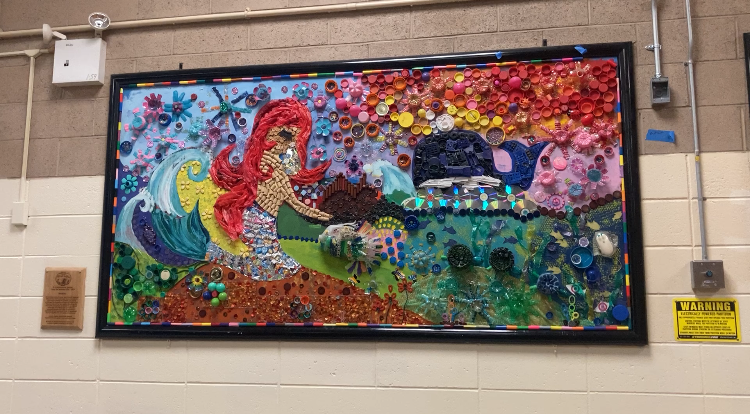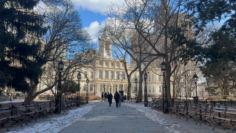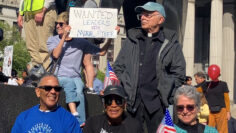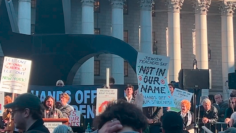New York artist turning trash into art
New York City has a trash problem. Plastic bags linger in the streets before sanitation workers can get to them.
But artists like Wing Kong have decided to take trash and turn it into something else.
When she moved from Hong Kong to New York City, the first thing Kong noticed was how much trash people consumed.
“I noticed there’s so many pencils and pens all over, scattered within sch0ols. It’s kind of like, just another pen, just another pencil, ” said Kong.
As her kids grew up in Queens, she found herself wanting to teach them about the environment through art. So Kong came up with the concept of Ariel from the Little Mermaid. She takes us through the process.
“So this is Ariel, her hair is made of plastic bags. This way, you can see Ariel’s face, Ariel’s crying. You can see the watch faces that I collected from watch manufacturers. It’s telling us that time is running out.”
Ariel’s tail is made of Capri Suns. There are old Metrocards cut into butterflies. Old plastic folders have been turned into seaweed. The keyboards make up the shell of turtles. The caps of markers frame the mural.
Twice a week, Kong comes to Fort Totten Park to look for her art supplies.
“Items that I go around and find are like bottle caps,” said Kong.
Wing Kong is just one of many artists who work with found materials. Often getting supplies from places like Materials for the Arts, which is a New York City Department of Cultural Affairs program.
“I will usually go into the park and start walking and I could be looking for birds or enjoying the quiet time.”
She picks up some wire she finds between the rocks. She notes that birds could get trapped and find it hard to escape.
Art historian Dr. Julie Reiss says there hasn’t been a clear movement of environmentalism in art. While artists have been using plastic and other materials, the environmental significance has grown over time.
“Artists could use plastic cups and plastic bottles in their artwork, or melting ice, and it still didn’t necessarily signify sustainability problems or the planetary crisis,” said Dr. Reiss.
Kim Holleman is an interdisciplinary artist who focuses on nature and the environment.
Holleman said, “We’re protecting the environment not just for the environment, but for our fellow citizens.”
A lot of Holleman’s work is picking up materials off the ground or taking a leaf off a plant and putting it into her purse for later use. She says found objects in her art is a way of cleaning the environment.
Dr. Reiss says that she believes environmental art has reached a saturation point, but artists whose proceeds go to environmental efforts will continue to be effective.
Genevieve is from Brooklyn, NY and covers Arts and Culture for City Newsroom. Genevieve is interested in stories that focus on the intersection of art and technology.
















